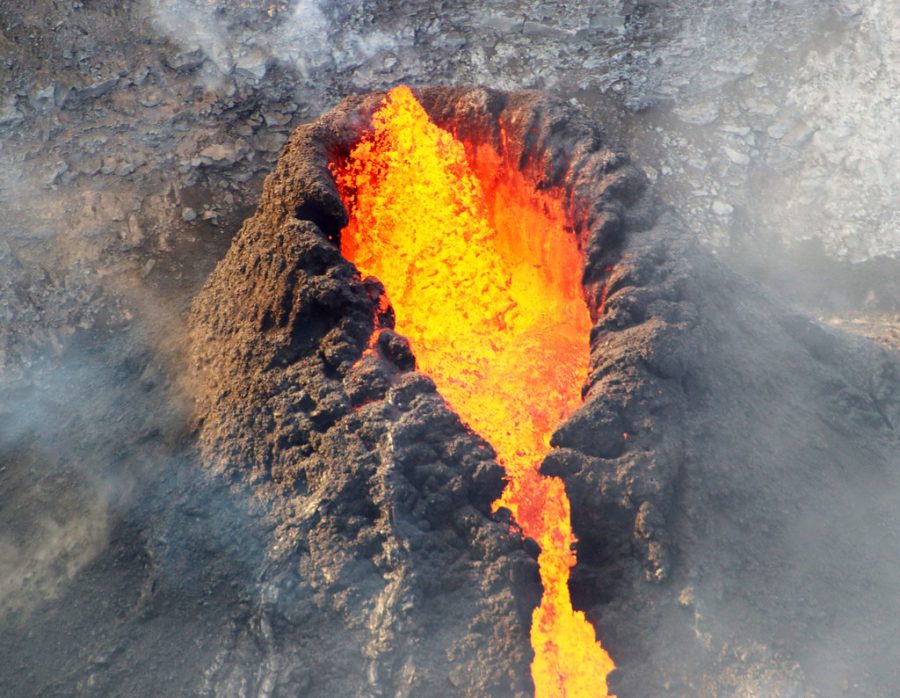Volcanoes in Hawaii: Beautiful? or Destructive?
Volcano in Hawaii
February 28, 2023
Volcanoes have created a large part of Hawaii’s landmass. For example, the eruption of Kilauea created 700 acres of usable land where villages were made, and people could build their homes. Volcanoes erupt when molten rock builds up in an underground chamber and pressure builds up, forcing magma upward and creating an eruption of lava.
Some of the most active volcanoes in Hawaii consist of Kilauea, Mauna Loa, Hualai, East Molokai, and West Molokai. USGS, a government website for geological study, reports about the activity of some Hawaiian volcanoes. Kilauea, the youngest and most active, continuously erupted from 1983-2018. Mauna Loa, the largest subaerial volcano, has erupted 34 times since 1843, with the longest eruption lasting 27 days. Mauna Loa’s most recent explosion was in 2022, which lasted two weeks. Finally, Hualalai is the third most active volcano, having erupted 11 times in the past 1,500 years.
Earthquakes are a big warning sign of an eruption about to occur. USGS found that “the Island of Hawai’i experiences thousands yearly.” Most of them are small and undetectable unless you have a specific machine. Once a decade, massive earthquakes cause damage to the Islands. As the magma builds up before and during the eruption, small earthquakes happen, but deep in the volcano, more significant earthquakes occur when magma pressurizes. The last century’s most powerful earthquake in Hawaii happened in November of 1975, having a 7.2 magnitude. It occurred on Kilauea’s south flank and caused many tsunamis; there were only two deaths, but the coast sustained much damage.
The ash from the eruption of a volcano creates “Vog,” volcanic smog, and acid rain. Acid rain forms when sulfur dioxide gas mixes with atmospheric moisture creating toxic air. Vog aggravates the respiratory system causing breathing problems, and acid rain ruin crops and rusts metals, which are terrible for buildings and other structures. In addition, drinking water becomes contaminated with lead from roofs and plumbing materials after sitting in acid rain.
The beauty of Hawaii keeps many citizens enthralled, but knowing the signs of a volcano is essential. Stay away from areas with toxic air to prevent breathing issues. Donation to the Red Cross is very beneficial; they care for many wounded and help people find their families. Hawaii is a charming state, and we must preserve its beauty and do all we can to help its citizens.




